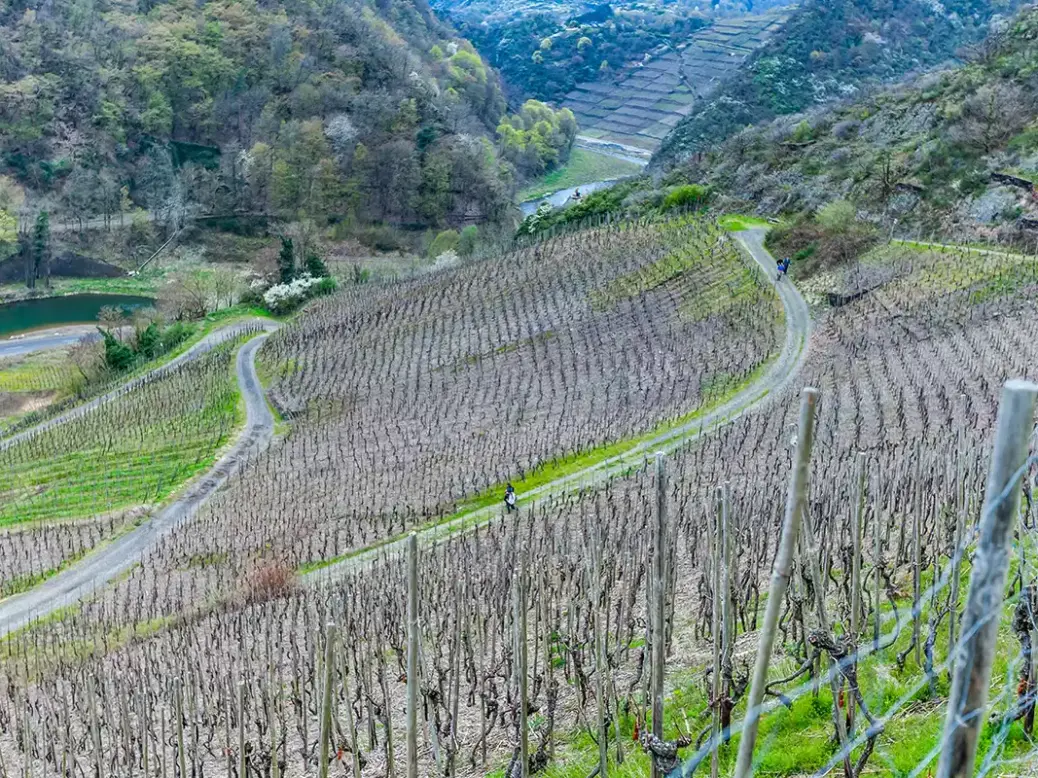
Twenty years ago, I used to quip that my heart would sink to my boots whenever a winemaker asked, “Would you like to try my Pinot Noir?” The enquiry usually came at the end of a visit and tasting, and a response in the affirmative was the only response. Some polite mutterings would follow before I signaled my retreat with an “Is that the time?” exclamation. Relating this semi-apocryphal scenario to a wine merchant friend, saying how exasperating I found it to taste a fine range of wines, only to be brought up short by a lumpen or vapid Pinot, he counseled, “Well, it took the Burgundians one thousand years to get it right, and sometimes they still make a mess of it, so it is not surprising the newcomers struggle. Give them time.”
Two decades later, the picture has changed markedly, which makes this, the latest monograph from the International Wine & Food Society, well timed to catch the rising tide of quality and interest in the prima donna grape, of which I once wrote, “… fickle as the Irish weather, bewitching as a temptress, enchanting as a nightingale.” Anne Krebiehl MW echoes this in her introduction: “In short, it captivates us, and its best examples transcend mere taste and flavor and let us glimpse something almost divine. For some reason, Pinot Noir engenders obsessiveness, both in those who drink it and in those who grow and make it.” Any Pinot-phile pondering those words—and the slew of rhetorical questions that dominate the introduction, attempting to explain the obsessiveness—will be comforted to know that they are safe in the hands of a fellow sufferer: “What is it about Pinot Noir that captivates us so much? […] Is it because Pinot Noir is said to express what other wines cannot, something profound that is a link to a particular place and time? Because growing and making it is such a challenge? Because it excels when it has had to struggle? Or perhaps because it has been with us humans for such a long time, and has helped and nurtured us as we helped and nurtured it?”
Over the following four-score pages, Krebiehl crafts a Pinot primer that goes some way toward answering her questions, but you can feel this grape, about which so much has been written, straining at the boundaries imposed by the booklet’s diminutive size. One senses, too, that “fellow sufferer” Krebiehl needs a bigger stage to do full justice to her subject. Indeed, I suspect she may have longed for another four-score pages to elaborate on Pinot’s myriad attractions and frustrations.
The dramatic improvement of Pinot Noir
The result is a work where, at times, the narrative leaps forward at time-warp pace, such as in Chapter 4, when, in the space of two paragraphs, the story jumps some nine centuries—from the founding of the Abbey of Cîteaux in 1098, to the second half of the 20th century. Chapter 2 also finishes at a gallop, when a little more information, even one more paragraph, would have fleshed out the tale. Such compaction catches the reader unawares at times.
Chapter 5 carries the book’s title—Pinot Noir Around the World—and forms the backbone of this work. It is here that Krebiehl displays the knowledge and enthusiasm that will assure readers they are in safe hands. Moving beyond Burgundy, she notes that the recent improvement in Alsace Pinot Noir “was a long time coming,” and I couldn’t agree more. Time was when every one I tasted promised much on the nose but failed to deliver on the palate, where the initial appeal tailed off into watery disappointment. If that echoes your experience, Krebiehl suggests you take another look soon; juicy promise on the nose has been joined by conviction and moderate length on the palate.

Skipping across the border to Germany, Krebiehl quotes Robert Parker’s coruscating put-down of German Pinot, written in 2002: “A grotesque and ghastly wine that tastes akin to a defective, sweet, faded, diluted red Burgundy from an incompetent producer. Need I say more?” My opinion at the time, though not as trenchant, was informed by exposure to wines I found soupy and clumsy, relying on heft rather than grace to make an impact; there was too much superstructure piled on shaky foundations. Given that Krebiehl is herself German, these pages provide, perhaps inevitably, the strongest regional profile in the book. Today, the news is all positive: Germany is now the world’s third-largest producer of Pinot Noir after France and the US, and Pinot is found in all 13 regions.
Krebiehl elaborates: “This resounding success is down to a complete shift from quantity to quality, pioneered by curious winemakers who were fed up with the status quo of the late 1980s and ’90s, and to their children who drove this quality ethos forward via much better viticulture and sensitive winemaking.” And she concludes: “Stylistically, it is impossible to pin German Pinot Noir down, but it is safe to say that Germany today offers a scintillating playground for any Pinot lover. No longer is [there] any doubt that some of them are world-class.” It is a sentiment with which I wholly concur—and I would go further and suggest that by the end of this century, far more than “some” German Pinots will be world-class.
Thereafter, Krebiehl sweeps across the globe, highlighting Pinot hot spots in New Zealand, Tasmania, Gippsland (home to my favorite New World Pinot, Bass Phillip), and many others, while not forgetting North and South America. Unsurprisingly, she references “the Sideways phenomenon,” in California, “that led to a veritable explosion of Pinot Noir,” thanks to the influence of the 2004 film based on the novel by Rex Pickett.
She also deals with the elephant in the room that is climate change, arguing, “Adaptation in both plant material and farming practices will go a long way toward mitigating the effects of climate change.” She then finishes optimistically, “Climate change has already shifted the latitudes in which it thrives, and may do so even more dramatically within our lifetime. But there is no doubt that Pinot Noir will continue to stay with us, as it already has for centuries.”
Highly recommended
Reviewing Richard Mayson’s The Essential Guide to Modern Madeira (see WFW 81, pp.54–55), I observed: “A minor irritation in this guide are the almost illegible captions printed on a greyed-out band at the bottom of the photographs, making them near-impossible to read. It’s a small detail, but it is a baffling design error that could have been easily avoided.” In Pinot Noir, it is still baffling and has yet to be avoided. I also noted: “I wish it was sturdier—after leafing through it a couple of times some of the pages were already coming loose from the binding.” This has been remedied in Krebiehl’s monograph—after a fashion: The pages are now simply stapled together, but that has the effect of cheapening the feel of the publication. Pinot Noir deserves better. And this work would have benefited hugely from an appendix of some recommendations or personal favorites; even one name from each region profiled would provide some direction, especially in the regions where attractive quality is pretty much a 21st-century happening.
Those few minor quibbles aside, I would have no hesitation in recommending this monograph, especially to Pinot neophytes—wine lovers keen to dip their toes in these challenging waters, particularly if they have been put off by all the fluster and hyperbole that Pinot generates. It will be a tenner well spent.
Pinot Noir Around the World
Anne Krebiehl MW
Published by The International Wine & Food Society
Available from iwfs.org/secretariat/purchase; 86 pages; $14 / £9.99 / €11






